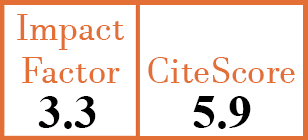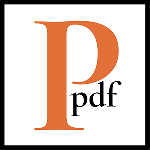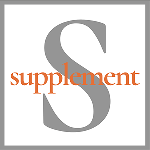Full Papers
Increased serum soluble interleukin-2 receptor concentrations are linked to high-sensitivity troponin T and disease progression in systemic sclerosis
L. Schumacher1, A. Müller2, A. Koch3, R. Markewitz4, P. Lamprecht5, G. Riemekasten6, S. Klapa7
- Department of Rheumatology and Clinical Immunology, University of Lübeck, Germany.
- Department of Rheumatology and Clinical Immunology, University of Lübeck, Germany.
- Institute of Experimental Medicine, Christian-Albrechts-University of Kiel c/o German Naval Medical Institute, Kronshagen, Germany.
- Institute of Clinical Chemistry, University Hospital Schleswig-Holstein, Germany.
- Department of Rheumatology and Clinical Immunology, University of Lübeck, Germany.
- Department of Rheumatology and Clinical Immunology, University of Lübeck, Germany.
- Department of Rheumatology and Clinical Immunology, University of Lübeck; and Institute of Experimental Medicine, Christian-Albrechts-University of Kiel c/o German Naval Medical Institute, Kronshagen, Germany. Sebastian.klapa@uksh.de
CER18265
2025 Vol.43, N°8
PI 1446, PF 1454
Full Papers
Free to view
(click on article PDF icon to read the article)
PMID: 40492443 [PubMed]
Received: 24/10/2024
Accepted : 10/02/2025
In Press: 06/06/2025
Published: 01/08/2025
Abstract
OBJECTIVES:
To determine serum interleukin-2 receptor (sIL-2R) concentrations as biomarker in systemic sclerosis (SSc) and their association with markers for inflammation (high-sensitivity C-reactive protein, hs-CRP), lymphocyte activation and turnover (beta-2 microglobulin, b2M), and cardiac damage (hs-troponin T, hs-TnT).
METHODS:
In this longitudinal cross-sectional observational study, serum sIL-2R concentrations were determined in 315 patients with SSc. Clinical data were assessed at baseline and up to 48 months after. Associations were calculated using logistic regression. Clinical deterioration was estimated using the Kaplan-Meier method.
RESULTS:
Patients with dcSSc (n=139) displayed increased serum sIL-2R concentrations (p=0.001) compared to lcSSc (n=176). Increase in sIL-2R concentrations was associated with cardiac (p=0.014), pulmonary (p=0.007) and skin involvement (p<0.001) in SSc. Overall, sIL-2R concentrations in SSc correlated with b2M (r=0.6161, p<0.001), hs-CRP (r=0.4091, p<0.001), and hs-TnT (r=0.4548, p<0.001). The serum sIL-2R concentration discriminated normal from pathological range concentrations of hs-TnT (ROC-AUC:0.87; 95%CI, 0.77-0.97; p<0.001; sensitivity 80.0%, specificity 80.1%). In patients with clinical improvement, the concentration of sIL-2R decreased (p=0.004). Using Log-rank test and Mantel-Cox proportional hazard models, we found that a sIL-2R concentration of ≥900 U/ml defined SSc subtypes with increased clinical activity and predicted early disease progression in SSc (HR:2.21, p=0.001).
CONCLUSIONS:
sIL-2R concentrations reflect disease severity, particularly cardiac damage, and early disease progression, and suggest a potential role for disease and therapy monitoring. Thus, sIL-2R should be further evaluated as a biomarker in SSc in prospective studies.



